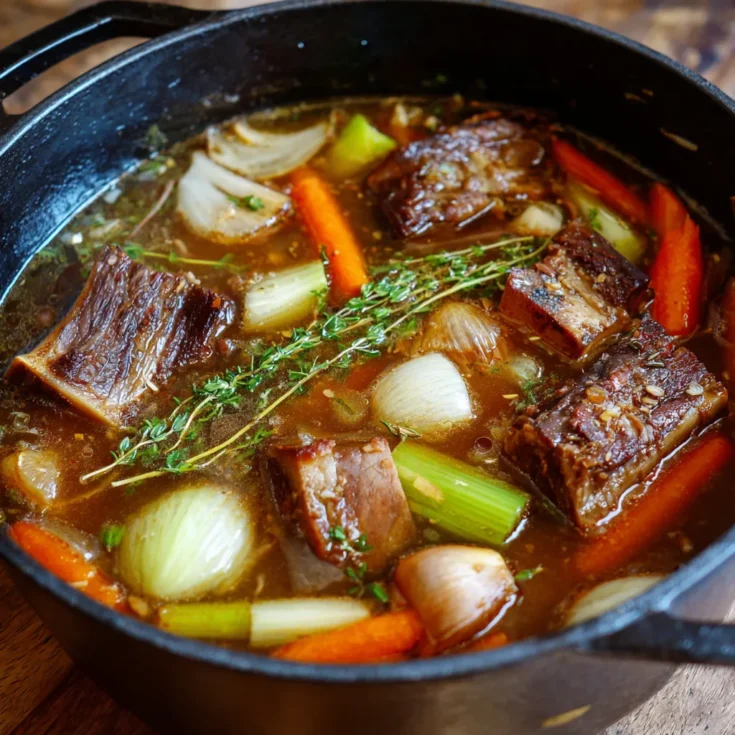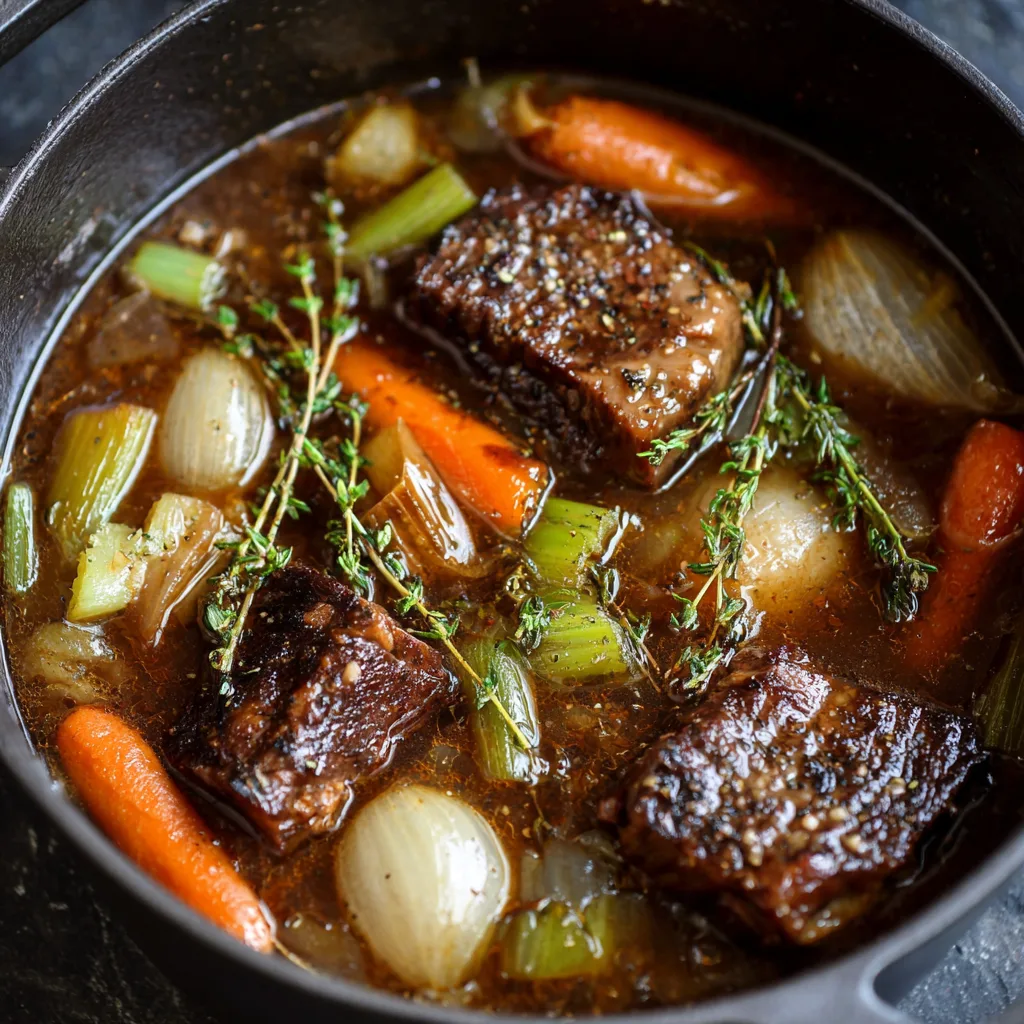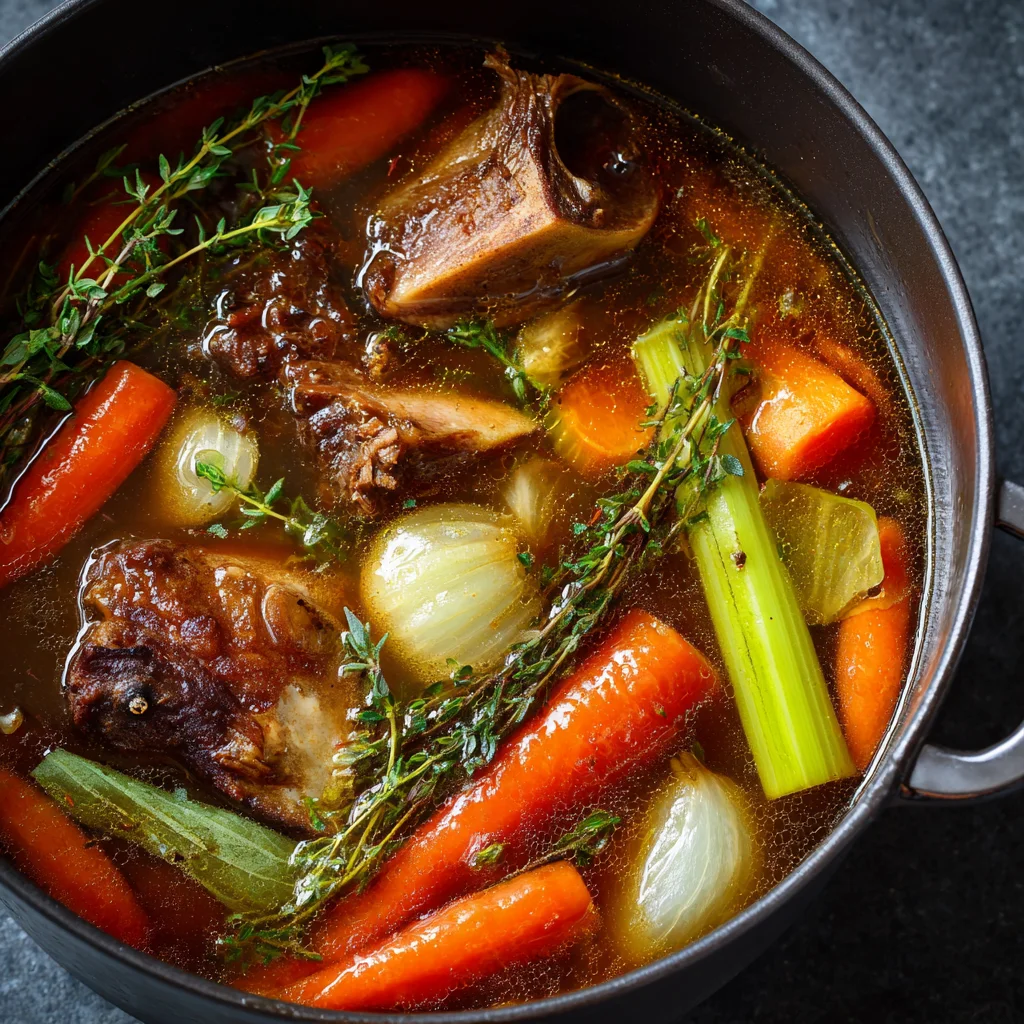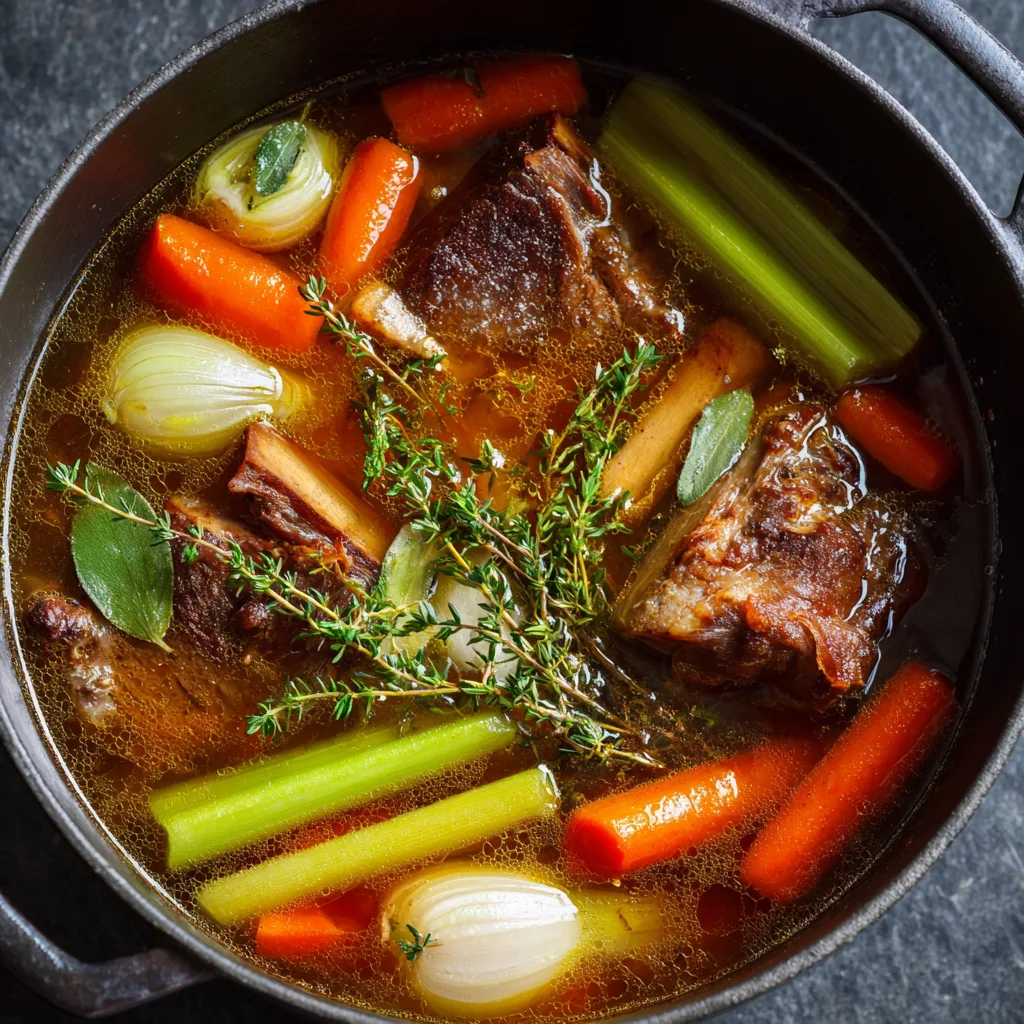Comforting Beef Broth: The Ultimate Warmth in a Bowl
Beef broth has long stood as a timeless comfort food, cherished in kitchens worldwide. This savory liquid captures the essence of slow-cooked beef bones, vegetables, and herbs, delivering a rich, nourishing experience. Its deep flavor and soothing warmth make it a staple for many seeking both taste and comfort.
Throughout history, beef broth has played a crucial role in culinary traditions. Cultures everywhere have relied on it not just for its hearty taste but also for its restorative qualities. Beyond its culinary value, beef broth provides essential nutrients that support health and healing. It serves as a gentle, hydrating option for those recovering from illness and a satisfying remedy during cold weather.
What truly makes beef broth comforting is more than just flavor. It’s the warmth it provides, the familiar aroma that evokes memories of home-cooked meals, and its rich nutritional profile. Packed with minerals, collagen, and gelatin, beef broth nurtures the body while soothing the soul.
This article will explore everything you need to know about comforting beef broth. From understanding its basics and health benefits to learning how to create the perfect homemade broth, you will find practical tips and flavorful ideas. Whether you want to enjoy it as a nourishing drink or use it as a base for delicious dishes, this guide has you covered. Prepare to discover the secrets behind one of the most satisfying and wholesome comfort foods.
What Is Beef Broth? Understanding the Basics of Beef Broth, Stock, and Bone Broth
Beef broth is a flavorful liquid made by simmering beef meat, bones, vegetables, and herbs in water. It serves as a foundation for many dishes and can also be enjoyed on its own. While often used interchangeably, beef broth, beef stock, and bone broth have subtle differences. Beef broth typically includes meat and bones simmered for a shorter time, producing a lighter and clearer liquid. Beef stock focuses more on bones and is cooked longer to extract collagen and gelatin, resulting in a thicker texture. Bone broth simmers even longer—often 12 hours or more—to maximize nutrient extraction, making it rich and hearty.
Typical ingredients in beef broth include beef bones or meat cuts, onions, carrots, celery, garlic, bay leaves, and peppercorns. These aromatics add depth and complexity to the broth. The cooking process begins with simmering these components gently, allowing flavors to meld over several hours. During simmering, impurities rise to the surface and are skimmed off to keep the broth clear. Once done, the broth is strained to remove solids, leaving a rich, aromatic liquid ready for use or enjoyment.
Nutritional and Health Benefits of Beef Broth: Collagen, Digestion, and Immunity
Beef broth offers more than delicious flavor—it provides numerous health benefits. It is an excellent source of collagen and gelatin, proteins that support joint health, skin elasticity, and gut lining repair. These nutrients break down during cooking and enrich the broth, making it a nourishing choice for overall wellness.
Supporting gut health is another key benefit. The gelatin in beef broth helps soothe and heal the digestive tract, promoting better nutrient absorption and reducing inflammation. Drinking warm broth can ease digestion and calm the stomach, making it an ideal remedy when feeling under the weather.
Moreover, beef broth contains essential minerals like calcium, magnesium, and potassium, which support immune function. These nutrients help the body defend against illnesses and recover more quickly. The comforting warmth of beef broth hydrates and soothes, making it a perfect comfort food that nourishes both body and mind.
Why Choose Homemade Beef Broth Over Store-Bought?
Making beef broth at home offers superior flavor and benefits compared to store-bought versions. Homemade broth delivers deeper, more complex taste because you control the quality of ingredients and cooking time. Slow simmering extracts maximum flavor from bones and aromatics, resulting in a broth that feels hearty and satisfying.
Homemade broth also allows complete control over ingredients. You avoid preservatives, artificial additives, and excess sodium often found in commercial products. This means a cleaner, healthier broth tailored to your preferences and dietary needs.
Cost-effectiveness is another advantage. Using leftover bones or affordable cuts reduces food waste and stretches your grocery budget. Plus, making broth at home supports sustainability by encouraging whole-animal usage and minimizing packaging waste.
In summary, homemade beef broth combines richer flavor, health-conscious ingredients, and economic sense. It elevates your meals and provides a wholesome, comforting experience unmatched by store-bought alternatives.
Essential Ingredients for Rich Beef Broth: Bones, Vegetables, and Seasonings
Creating a deeply flavorful beef broth starts with choosing the right ingredients. The foundation is quality beef bones. Marrow bones provide rich fat and gelatin, while knuckle bones add collagen that gives broth its silky texture. Oxtail brings a unique taste and more gelatin, enhancing body and mouthfeel. Using a mix of these bones yields the richest broth.
Next, fresh vegetables and aromatics boost the broth’s complexity. Classic choices include onions, carrots, and celery, which add natural sweetness and balance. Garlic adds a savory punch, while herbs like thyme, bay leaves, and parsley introduce fragrant notes. These ingredients combine to create a broth that feels layered and comforting.
Seasonings play a subtle but essential role. Black peppercorns provide mild heat and earthiness without overpowering the broth. Salt should be added carefully toward the end to enhance flavors without drying out the broth. Together, these ingredients create the perfect base for a comforting beef broth.
Step-by-Step Guide to Preparing Comforting Beef Broth
Start by roasting your beef bones on a baking sheet at 400°F (200°C) for about 30–45 minutes. This step is optional but highly recommended because it caramelizes the bones, adding depth and a rich brown color to the broth.
Once roasted, transfer the bones to a large pot or slow cooker. Cover with cold water and bring to a gentle simmer. Avoid boiling, as it can cloud the broth and break down delicate flavors. Simmer low and slow for at least 6 hours, ideally 8 to 12, to fully extract nutrients and flavor.
Throughout simmering, impurities and foam will rise to the surface. Skim these off with a ladle every 30 minutes to keep the broth clear and pure. About halfway through the cooking process, add your vegetables and herbs. Adding them too early can lead to bitter flavors; waiting ensures their sweetness and aroma infuse properly.
Once done, strain the broth through a fine mesh sieve or cheesecloth. This removes solids, leaving a clear, fragrant liquid. Cool the broth quickly to avoid bacterial growth and store it in airtight containers. It can last up to five days in the fridge or be frozen for months.
Tips for Enhancing Flavor and Texture in Beef Broth
To boost nutrient extraction, add a tablespoon of apple cider vinegar or lemon juice before simmering. The acid helps break down collagen and minerals, enriching the broth’s body.
Choose your cooking method based on time and convenience. Slow cookers allow unattended simmering, stovetop offers more control, and pressure cookers drastically reduce cooking time without sacrificing flavor.
Adjust salt and seasoning only after simmering finishes. This avoids over-salting and lets you tailor the broth’s taste to your preference.
Flavorful Variations of Comforting Beef Broth
Explore variations by infusing your broth with spices and herbs. Thyme, bay leaves, and star anise bring warm, complex notes perfect for winter dishes.
For an Asian-inspired twist, add ginger slices, lemongrass stalks, and a splash of soy sauce. This creates a fragrant, umami-rich broth ideal for noodle soups.
To maximize collagen, blend in powdered collagen supplements or simmer additional connective tissues and tendons. These variations offer versatility while maintaining the comforting essence of beef broth.
How to Enjoy Comforting Beef Broth: Warm Drinks, Soups, and More
Comforting beef broth shines when enjoyed on its own. Sip it warm to soothe your body and calm your mind. This simple ritual provides hydration and gentle nourishment, especially during cold or stressful days.
Beef broth also serves as the perfect base for hearty soups and stews. Classic dishes like French onion soup and beef noodle soup rely on rich broth for their signature flavors. Adding broth to these recipes enhances depth and warmth, turning simple ingredients into comforting meals.
You can use beef broth to cook grains like rice, quinoa, or barley. This infuses them with savory notes, elevating everyday side dishes. Similarly, cooking legumes such as lentils or beans in broth adds richness and boosts their nutritional value.
Broth also enhances sauces and gravies. Instead of water, using beef broth creates layers of flavor that complement meats, vegetables, and casseroles. Its natural umami brings dishes to life with minimal effort.
Pairing Beef Broth with Comfort Foods: Breads, Family Meals, and Seasonal Ideas
Pair beef broth with rustic bread or hearty sandwiches to create a satisfying meal. A crusty loaf dipped in warm broth makes a simple yet soul-satisfying combination. Light salads dressed with vinaigrettes provide balance and freshness alongside a bowl of broth.
Incorporate beef broth into family-friendly meals for added nutrition and flavor. Use it in casseroles, pot roasts, or slow-cooked dishes that everyone will love. The broth’s versatility makes it a kitchen staple that supports easy, wholesome cooking.
Seasonally, beef broth shines as a winter warmer. Serve it as a hot drink on chilly days or use it to create cold-weather favorites like beef stew or hot noodle bowls. Its warming qualities and nourishing richness offer comfort when you need it most.
FAQs: Common Questions About Comforting Beef Broth
What is the difference between beef broth and beef stock?
Beef broth is made by simmering meat and some bones, resulting in a lighter, flavorful liquid. Beef stock uses mostly bones and cooks longer to extract collagen, creating a thicker, richer base.
How long should beef broth simmer for maximum flavor?
Simmer beef broth gently for at least 6 to 8 hours. For deeper flavor and more nutrients, simmering up to 12 hours is ideal.
Can beef broth be frozen and stored for later use?
Yes, beef broth freezes well. Store it in airtight containers or freezer-safe bags for up to 3–6 months. Thaw in the refrigerator before reheating.
Is beef broth suitable for certain diets like keto or paleo?
Absolutely. Beef broth is low in carbs and rich in nutrients, making it a great fit for keto, paleo, and many whole-food diets.
How do I make beef broth clear and not cloudy?
Simmer the broth gently without boiling and skim impurities regularly. Avoid stirring too much and strain the broth through a fine mesh or cheesecloth.
Can I use leftover beef bones from meals to make broth?
Yes, leftover bones from roasts or steaks work well. Roast them first to enhance flavor before simmering.
How do I know when beef broth is done cooking?
The broth is ready when it has a rich aroma, deep color, and full-bodied flavor. The bones should be soft and release gelatin, giving the broth a slightly thick texture.
Comforting Beef Broth – Rich, Homemade, and Nourishing

A rich, nourishing beef broth perfect for soothing and warming meals.
Ingredients
- Beef marrow bones (2–3 pounds)
- Knuckle bones (optional, 1 pound)
- 2 large onions, quartered
- 3 carrots, chopped
- 3 celery stalks, chopped
- 4 garlic cloves, smashed
- 2 bay leaves
- 1 teaspoon black peppercorns
- 1 tablespoon apple cider vinegar
- Water to cover
Instructions
Notes




